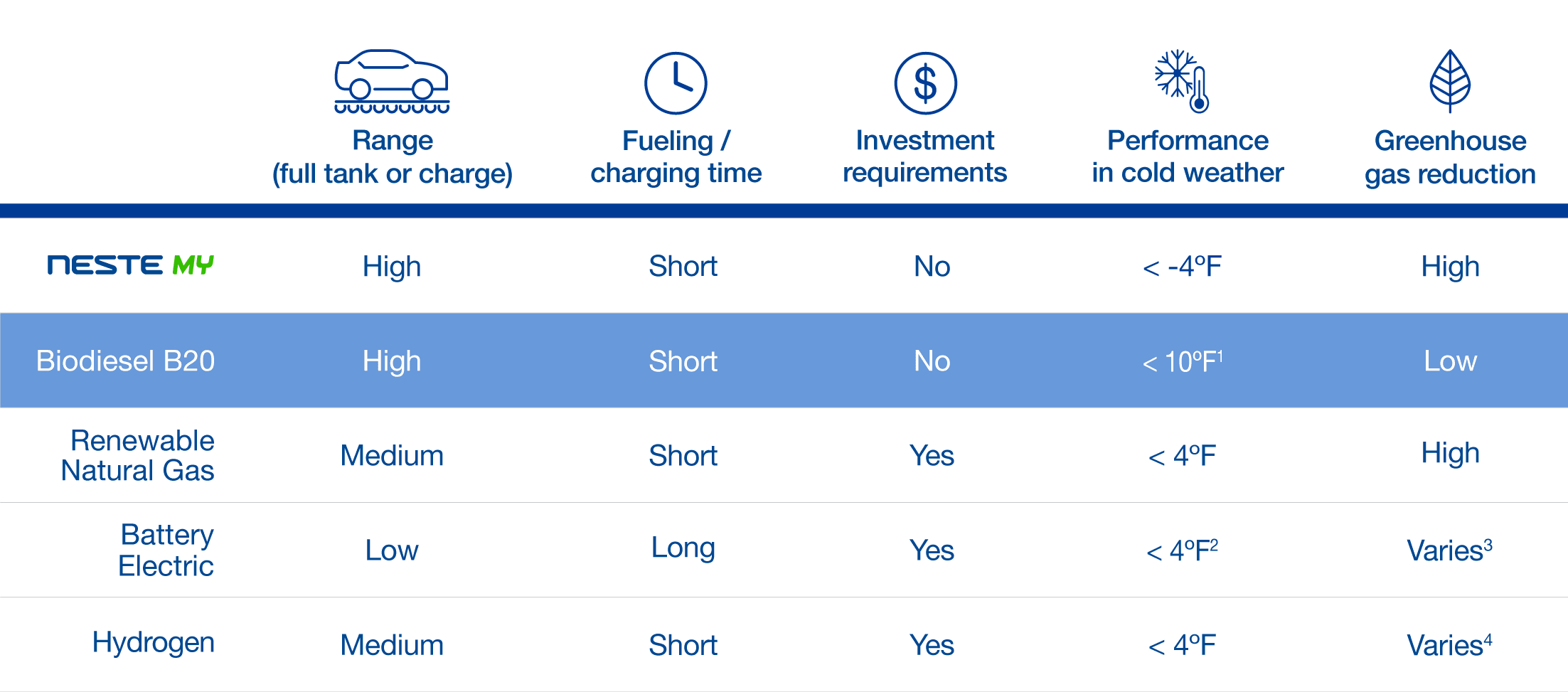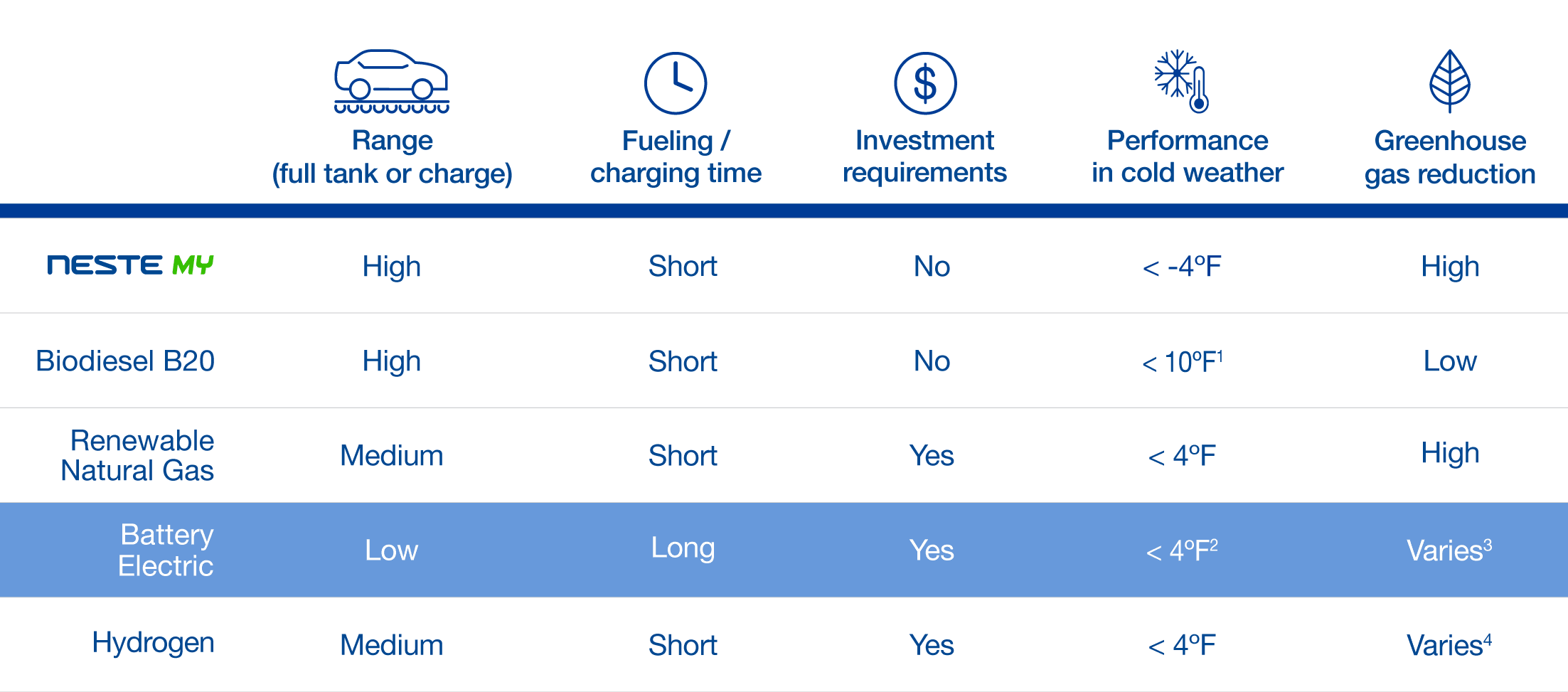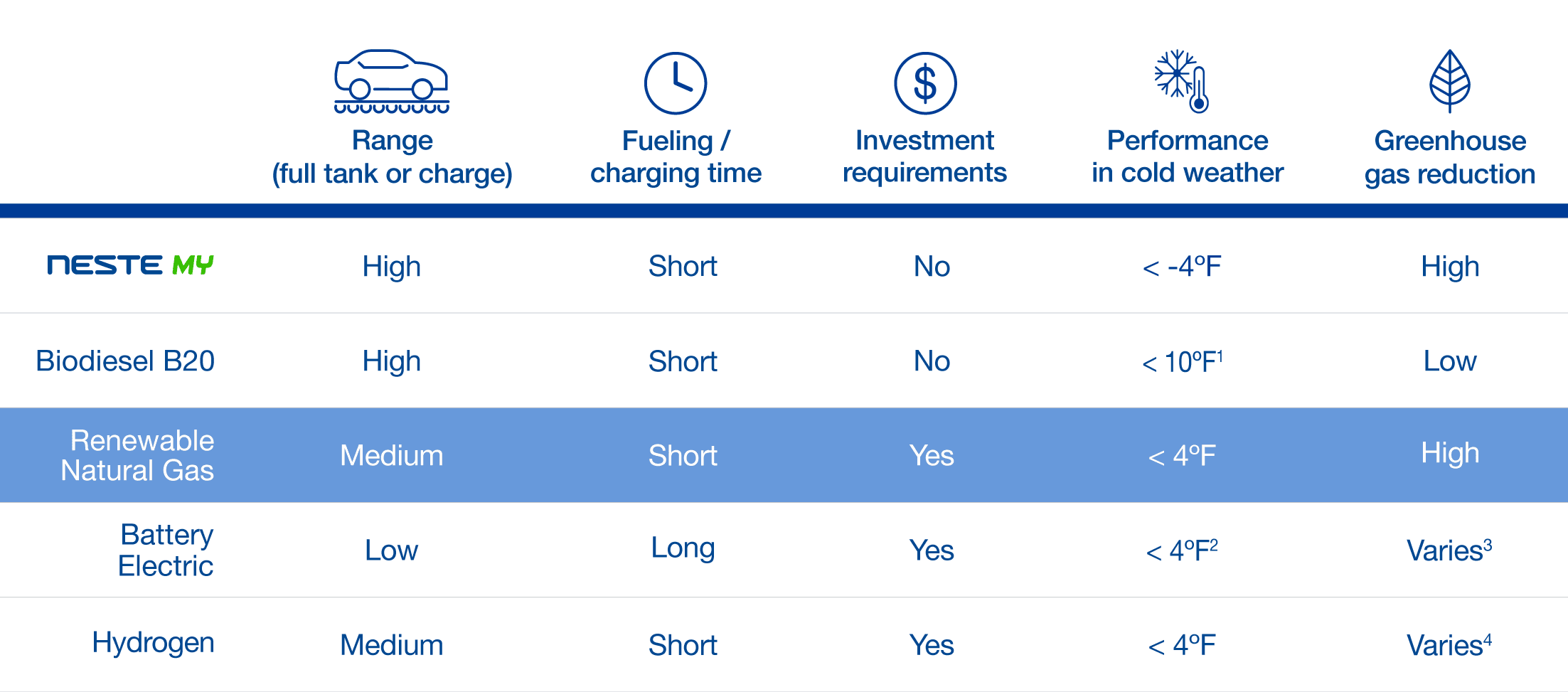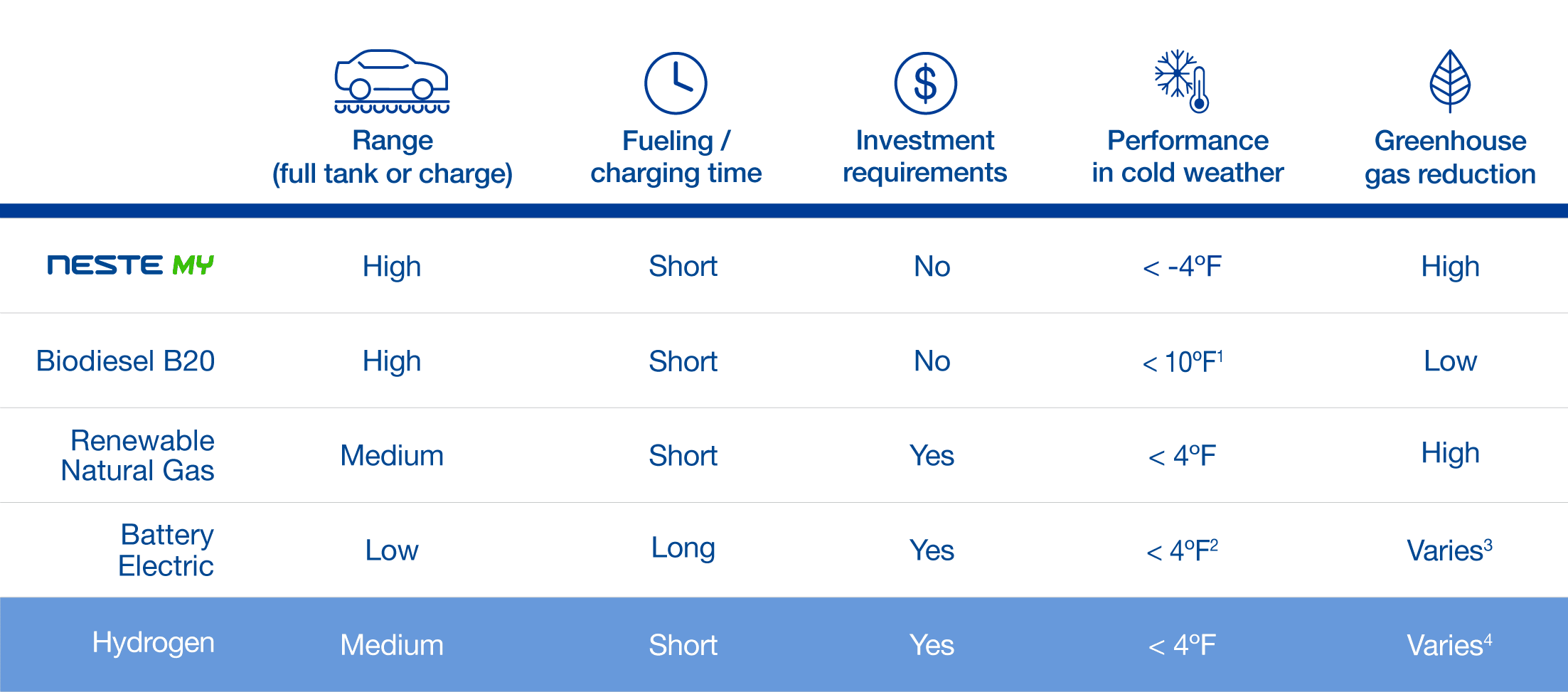Biofuels
Biofuels
In 2019 the total global consumption of crude oil was 4,525 million tons of oil equivalent (Mtoe). The transportation industry is responsible for 60% of this amount and ambitious goals have been set to reduce greenhouse gas (GHG) emissions. To achieve these objectives, transportation companies have a variety of solutions available, for example switching to renewable and other lower-emission alternatives, such as biofuels and electrification.

What are biofuels?
Biofuels are fuels made from renewable raw materials, such as biomass or oils and fats from renewable origins. In contrast, fossil fuels are made from non-renewable fossil resources, such as crude oil. When comparing the two, biofuels emit significantly less greenhouse gas emissions over their life cycle, including sourcing, production and actual usage. Another benefit of renewable fuels is they are made from previously used materials (for example waste and residues) or oil extracted from plants that can re-absorb CO2 from the air through photosynthesis. Renewable diesel, biodiesel, renewable natural gas, ethanol, and renewable hydrogen are biofuels available today.
Renewable diesel and biodiesel are often confused, but they are not the same. Renewable diesel is a pure hydrocarbon diesel fuel chemically very similar to fossil diesel and is also known as, Hydrotreated Vegetable Oil (HVO) fuel, whereas biodiesel is a Fatty Acid Methyl Ester (FAME) product which is not a hydrocarbon.
Although both fuels are produced from renewable raw materials, they are chemically different. Renewable diesel – a second generation biofuel – is far more versatile. Advanced production technologies ensure that renewable diesel is a drop-in solution that can be used in pure form with no blending required. Biodiesel's composition makes it less compatible with existing diesel engines at full concentration, and most OEMs recommend that biodiesel be blended with renewable diesel or fossil diesel at concentrations of 20% or less.
Are biofuels renewable?
Biofuels are generally considered to be renewable, because they are derived from biological materials that can be replenished over time. As long as the source raw materials are managed and renewed properly, biofuels have minimal impact on the environment and can supply much of our energy needs. However, unlike other biofuels that rely primarily on agriculture for feedstock, Neste MY Renewable Diesel is produced from feedstock consisting of sustainably-sourced waste raw materials such as used cooking oil and animal fats.
Factors for consideration
When selecting the right lower-emission alternative for your diesel engines, you should take into consideration the following:
RANGE
AVAILABILITY

REFUELING TIME
INVESTMENT REQUIREMENTS
COLD WEATHER PERFORMANCE
GREENHOUSE GAS EMISSIONS REDUCTION
Factors for consideration
Alternative fuels – a comparison
Some of the alternative fuels available in the United States are, ethanol, biodiesel, renewable diesel (HVO), natural gas, renewable natural gas, electricity and hydrogen. A brief description of these alternatives can be found below. We included electricity/battery operation in our comparison, although the majority of electricity in most of the world is not from renewable sources, yet.
Renewable diesel (HVO)
Renewable diesel has a similar chemical composition to fossil diesel. It is made entirely from renewable raw materials and can be used as a drop-in fuel. In the United States, Neste sells renewable fuel branded as Neste MY Renewable Diesel™.
You can use renewable diesel in all diesel-powered vehicles without modifying the engine, investing in new vehicles, or investing in new fueling equipment. The use of Neste MY Renewable Diesel can also reduce emissions of nitrogen oxide (NOx) and particulate matter (PM), especially in older vehicles with less advanced engine technology. Neste MY Renewable diesel works just like fossil diesel: it will perform optimally at temperatures as low as -4°F (-20°C) for winter grade, and under proper conditions, can be stored for many years. Renewable diesel is fully interchangeable with fossil diesel, so it is possible to blend renewable diesel with fossil diesel in any proportion or use it in its neat form.
Neste MY Renewable Diesel is sold through Neste's distributors at over 24 stations in the US. Read more about Neste MY Renewable Diesel.
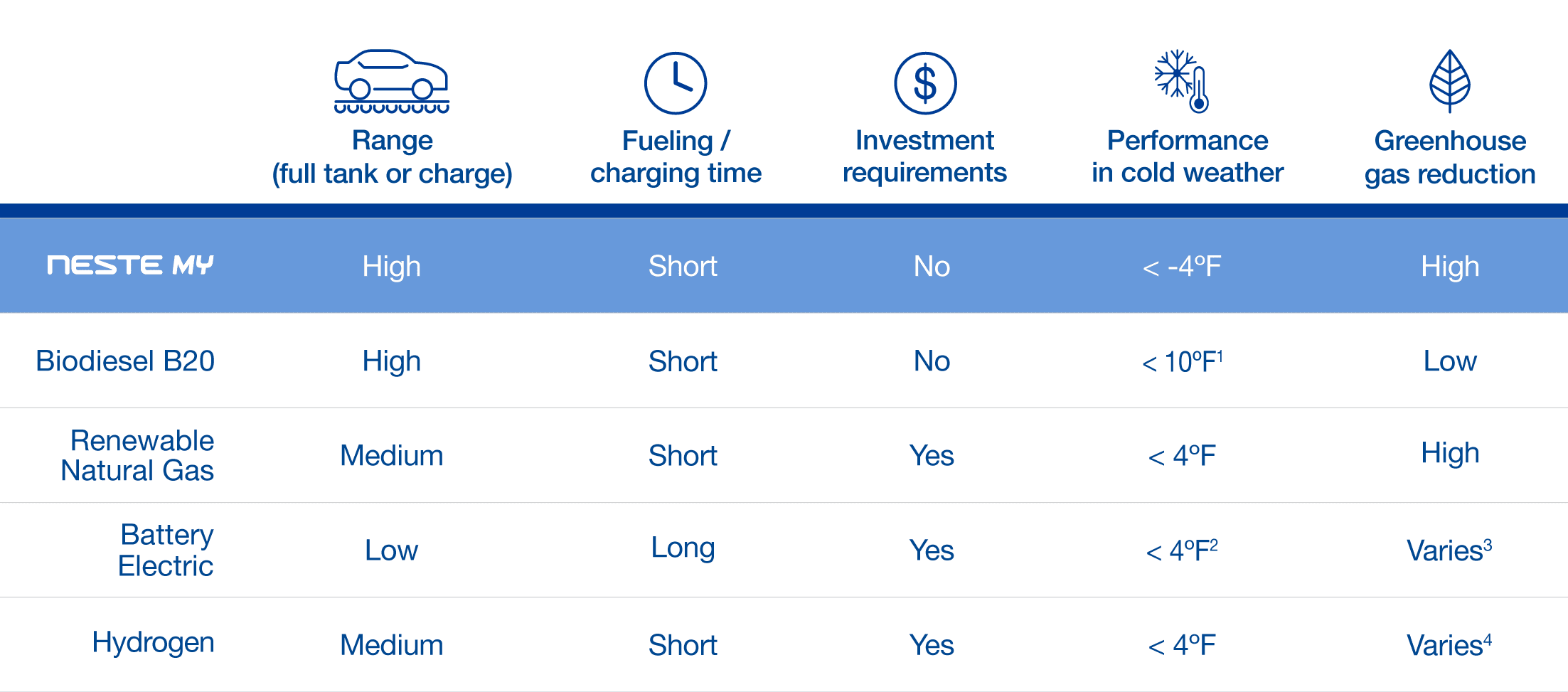
Data represents medium and heavy duty trucking. 1 Depends on the fossil fuel used for blending. 2 EV range can be reduced. 3 Depends on local grid carbon intensity. 4 Depends on hydrogen production method.
Questions and answers
Learn more about Neste MY

Questions and answers about Neste MY Renewable Diesel

What is the difference between Neste MY Renewable Diesel and biodiesel?



